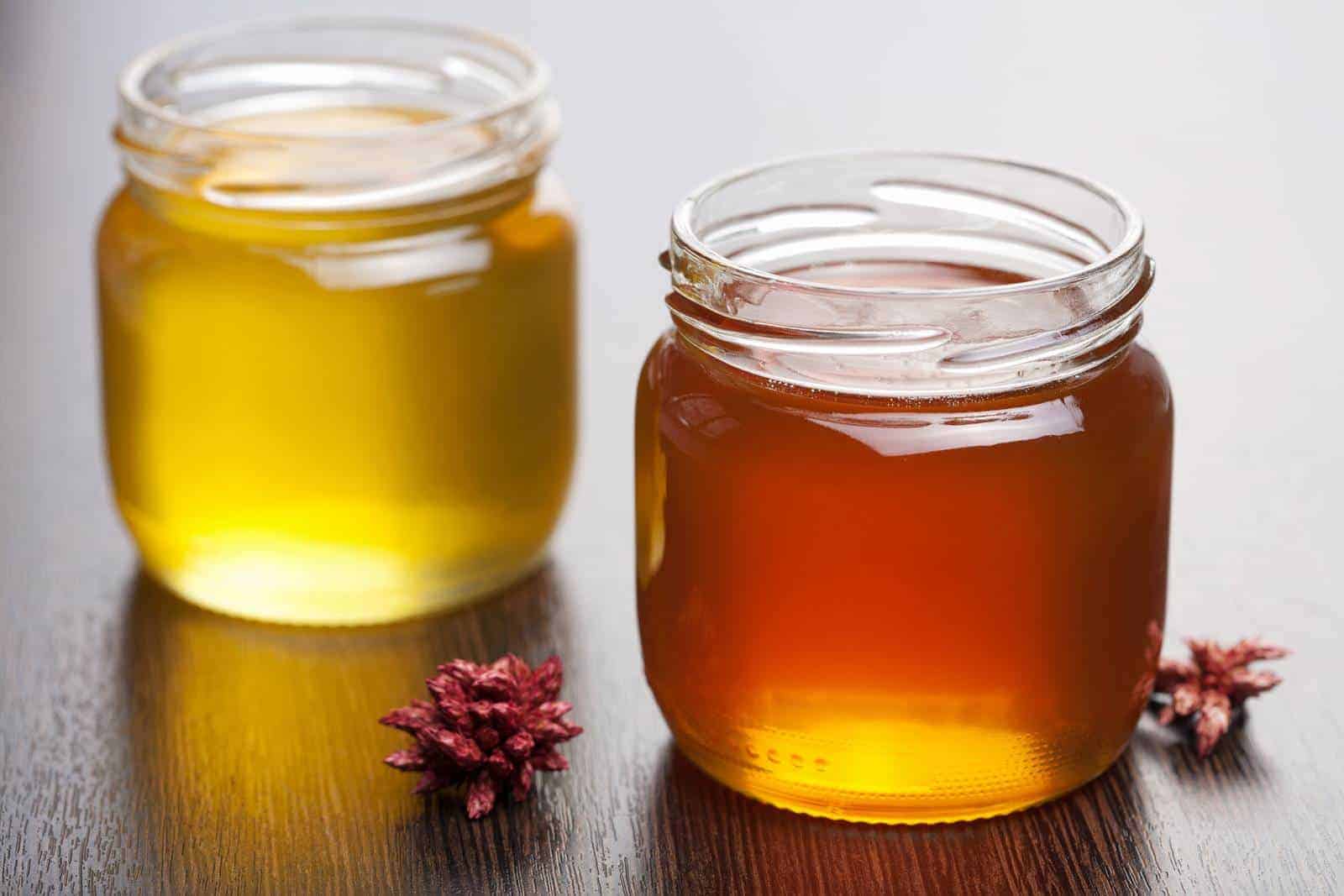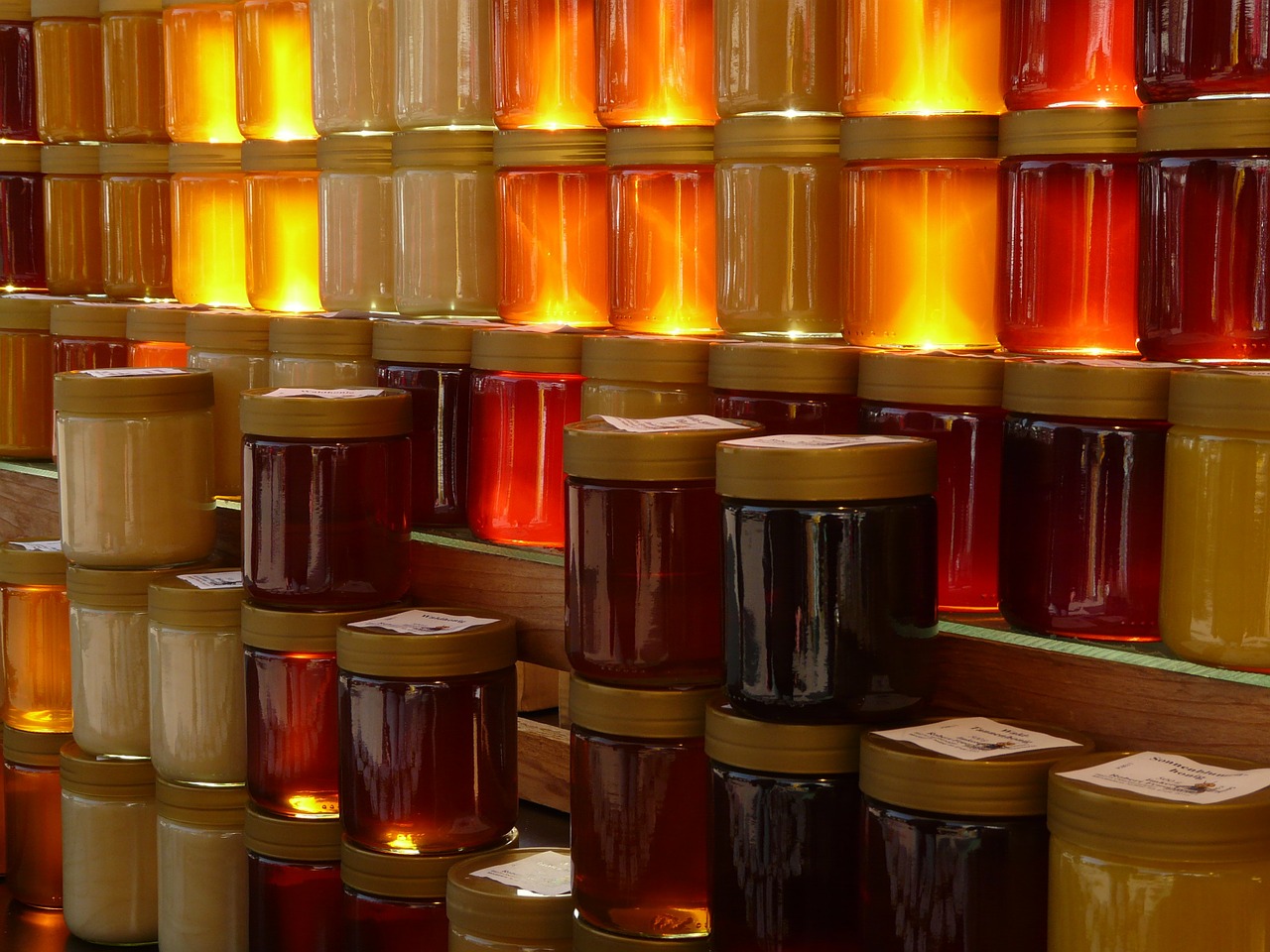
The dark color is thought to be produced by the repeated use of these brood cells and the debris and propolis which builds up over time. Yeah some nectars are darker - in fresh honey it can be from flavonoids or other anti-oxidants or from increased minerals all very healthy.

Its not hard to imagine that when there is more humidity the nectar flows much faster.
Why is my honey dark. In the US at least dark honey often means the source was a mix of wildflowers. I know that in September my bees were gathering mostly from goldenrod. My honey was very dark and almost opaque more like molasses actually.
It doesnt even vaguely resemble the clear amber color that we usually associate with honey. It tastes very good though. Yeah some nectars are darker - in fresh honey it can be from flavonoids or other anti-oxidants or from increased minerals all very healthy.
Honey also gets darker as it gets older - some oxidation and aging occurs. Unfortunately many people prefer white bread over whole wheat pumpernickel and other excellent breads and prefer light colored honey over dark. Its not hard to imagine that when there is more humidity the nectar flows much faster.
But when it is dry the slow flow of nectar has a higher percentage of pollen nutrients flavor compounds. Thereby creating a darker more flavorful honey. So while our volume of honey is down this year the flavor is definitely UP.
Because dark honey contains the natural kind of substances but most of the dark honey causes by the time that you keep it. If you want light color honey change to dark then you can. Dark honey is higher in antioxidants than light honey.
Dark honeys tend to be stronger tasting while light honeys are very mild. I have heard that if bees make honey from wild carrot Queen Annes Lace it makes a black honey that is nasty tasting. The color of honey depends on its floral source because of minerals and some other components.
However honey color can change with time and exposure to heat. The honey stored at higher temperatures turns dark. Stored honey might granulate after some time and then the color depends on the crystal size.
Over time warm climate or environment can cause cream honey to become darker in color and less viscous and runnier. The honey has returned closer to its original liquid state. For creamed honey that is too solid hard you can run the jar in a warm bath to make it runny again.
Because the composition of honey depends on the species of the bees as well as the plants and flowers they use it can vary significantly in flavor. Dark honeycomb is found where cells have been used for brood rearing. The dark color is thought to be produced by the repeated use of these brood cells and the debris and propolis which builds up over time.
Cells used only for storing honey remain light in color. If you find dark beeswax in your hive dont worry this is perfectly natural. Honeycomb with wet cappings is not actually wet but it looks like it might be.
The appearance is darker and may have a variegated pattern due to scattered mini air pockets which have a lighter color. While some honey bees produce both types of. Maybe its changed color or crystallized.
If youre considering throwing it away think again. You dont have to toss that honey. Even if honey had been sitting on your shelf for 2000 years that honey would still be as good as the day you opened it.
It is common to find imported creamy honey in the warehouse turning darker in color and part of it transforming into liquid form forming a separate dark liquid on top of the bottle. Free radicals are atoms or molecules that are usually reactive or unstable. In an article to be published in the Journal of Apicultural Research the.
The color found in the dirt and debris combined with the layers of propoliswhich is usually darkprobably accounts for most of the color change. But you say the inside of honey cells are brushed with propolis too. That is true but the honey cells do not contain cocoons and they are emptied and polished seldomusually only once a year.
Dark urine due to dehydration is usually amber or honey-colored. Dark urine due to other causes can be tinged with brown or red. Some people have urine that appears almost syrup-like.
Consequently partially filled late spring supers tend to contain mostly tulip poplar nectar. The bees naturally mix this darkish red liquid with the ultralight amber sourwood nectar. The result is our Big Red honey.
The above photo is of the two samples we sent for pollen analysis to Dr. Bryant at Texas AM.